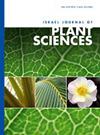Adventitious root formation – from the laboratory to the greenhouse
IF 0.9
4区 生物学
Q4 PLANT SCIENCES
引用次数: 0
Abstract
Unlike most animals, plants have the ability to regenerate new organs which is not part of their original developmental program. This ability underlies the phenomenon of adventitious root formation in which non-root cells change their fate and coordinately form a functional root. The precise signals required for the successful formation of an adventitious root are not entirely clear and probably consist of a repertoire of signals that differ from plant to plant. Thus, mature/ juvenile, woody/herbaceous, and phenolic and aromatic compound-rich /poor plants are probably using a slightly different repertoire of signaling molecules to create the rooting permissive conditions. In some cases, there is a huge clone-to-clone difference in rooting capability which probably results from genetic heterogeneity within individuals of the same species. Accordingly, rooting conditions should be adjusted to meet the requirements of each situation, especially in the case of rooting-recalcitrant ones. Thus, obtaining adventitious root formation from various plants might require precise and individualized protocols. Rooting efficiency is strongly affected by several parameters: (1) the physiological status and well-being of the mother plant – season, age, proper nutrition, shading or etiolation, and pruning regime are very important; (2) the cutting itself – herbaceous or woody, apical or subapical, dormant or growing, the thickness and length of the stem and the number of leaves all play a role; (3) the rooting conditions – bedding composition, temperature of the rooting table and air inside the greenhouse, humidity, and light intensity; (4) the auxin treatment – concentration, type of auxin (IBA or other synthetic auxins), mode of application (submergence of the cutting base or foliar spray), and length of the treatment. Adventitious roots can also be induced under tissueculture conditions, or in hydroponic systems, where conditions can be tightly controlled throughout the process. The molecular mechanisms underlying adventitious root formation, or the barriers that block adventitious root formation in recalcitrant plants, are slowly being revealed, by the scientific community, but much has yet to be discovered. The current special issue, dedicated to adventitious root formation, provides an overview of recent findings and insights. Adventitious root formation – from the laboratory to the greenhouse不定根的形成——从实验室到温室
与大多数动物不同,植物有能力再生新的器官,这不是它们最初发育程序的一部分。这种能力是不定根形成现象的基础,在这种现象中,非根细胞改变其命运并协调形成功能根。成功形成不定根所需的精确信号并不完全清楚,可能由不同植物的信号组成。因此,成熟/幼龄、木本/草本以及富含/缺乏酚类和芳香族化合物的植物可能使用稍微不同的信号分子来创造生根条件。在某些情况下,在生根能力上存在巨大的克隆间差异,这可能是由于同一物种个体内部的遗传异质性造成的。因此,应调整生根条件以满足每种情况的要求,特别是在生根难的情况下。因此,从各种植物中获得不定根形成可能需要精确和个性化的方案。生根效率受到几个参数的强烈影响:(1)母株的生理状态和健康状况——季节、年龄、适当的营养、遮荫或黄化以及修剪制度非常重要;(2) 切割本身——草本或木质,顶端或近顶端,休眠或生长,茎的厚度和长度以及叶片的数量都起着一定的作用;(3) 生根条件——垫层组成、生根台温度和温室内空气、湿度和光照强度;(4) 生长素处理——浓度、生长素类型(IBA或其他合成生长素)、施用方式(淹没扦插基质或叶面喷雾)和处理时间。不定根也可以在组织培养条件下或在水培系统中诱导,在整个过程中可以严格控制条件。科学界正在慢慢揭示不定根形成的分子机制,或者说阻碍顽固植物不定根生成的障碍,但还有很多有待发现。目前的特刊,致力于不定根的形成,提供了最新发现和见解的概述。不定根形成——从实验室到温室
本文章由计算机程序翻译,如有差异,请以英文原文为准。
求助全文
约1分钟内获得全文
求助全文
来源期刊

Israel Journal of Plant Sciences
生物-植物科学
CiteScore
1.90
自引率
0.00%
发文量
17
审稿时长
>12 weeks
期刊介绍:
The Israel Journal of Plant Sciences is an international journal of extensive scope that publishes special issues dealing with all aspects of plant sciences, including but not limited to: physiology, cell biology, development, botany, genetic
 求助内容:
求助内容: 应助结果提醒方式:
应助结果提醒方式:


